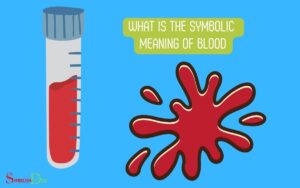What Is the Symbolic Meaning of a Ring? Status!
Rings symbolize a variety of meanings including eternal love, unbroken promises, status, and personal style.
They are often used in engagements and weddings to signify commitment, but can also represent individuality through fashion choices. Rings can carry spiritual or religious significance as well, denoting affiliation or belief.
The symbolism of a ring varies across different contexts:
- Eternal Love: The unending circle of a ring represents endless love, making it a popular symbol for marriages and engagements.
- Commitment and Promises: Rings are often exchanged to signify promises and vows, serving as a physical reminder of a bond or agreement.
- Status and Authority: Certain rings, such as signet rings, can denote family heritage, social status, or professional rank.
- Personal Style: Beyond symbolic meanings, rings can also be a form of self-expression and fashion.
- Spiritual Significance: Rings are sometimes worn to signify religious beliefs or as talismans for protection or good fortune.
For example, a wedding ring worn on the fourth finger is believed to connect to the ‘vein of love’ leading to the heart.
Embodying timeless elegance, rings are not just ornamental but carry layers of meaning, from marital commitment to personal identity.
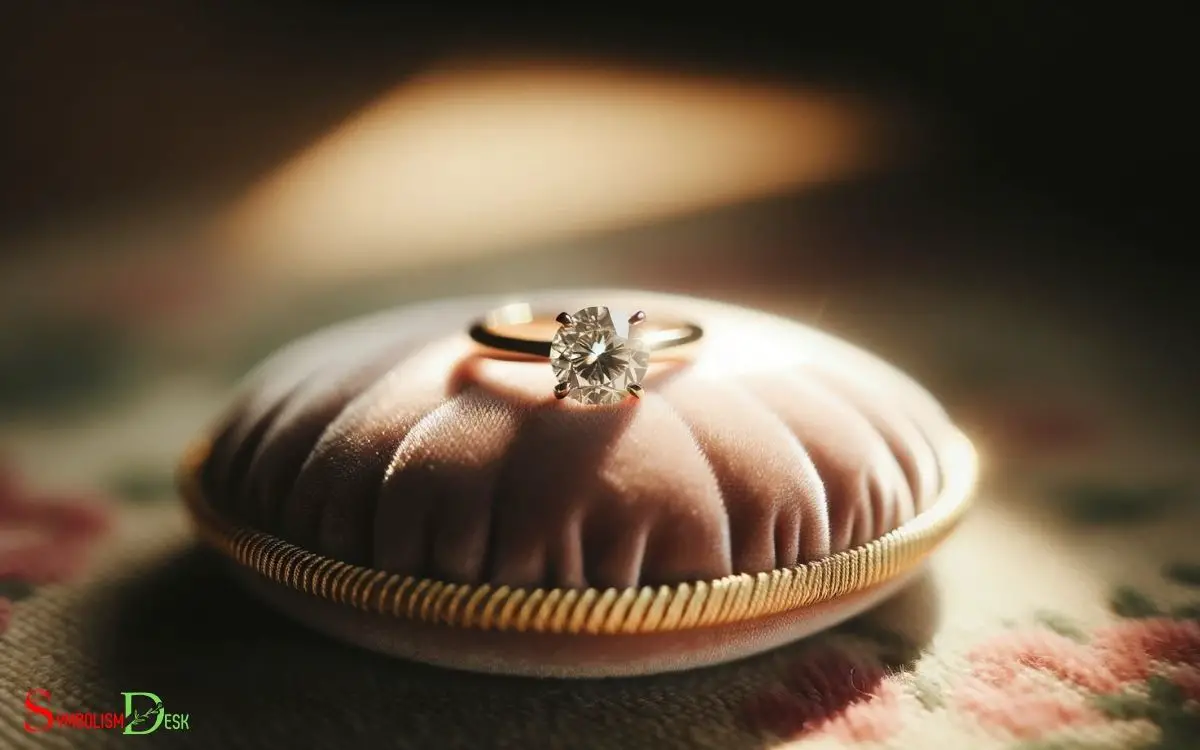
Key Takeaway
Historical Significance of Rings

The historical significance of rings dates back to ancient civilizations, where they were used to signify power and authority.
In ancient Egypt, rings were seen as symbols of eternity, with the circular shape representing never-ending love and the connection between the Earth and the heavens.
In ancient Rome, rings were used not only as personal adornments but also as a seal of authenticity and authority. The famous Roman rings, known as ‘signet rings,’ were engraved with intricate designs and used to seal important documents.
Throughout history, rings have also been used to convey loyalty and commitment, such as in wedding bands.
Understanding the historical weight of rings provides insight into their enduring symbolic importance in contemporary society.
Cultural Symbolism of Ring Designs
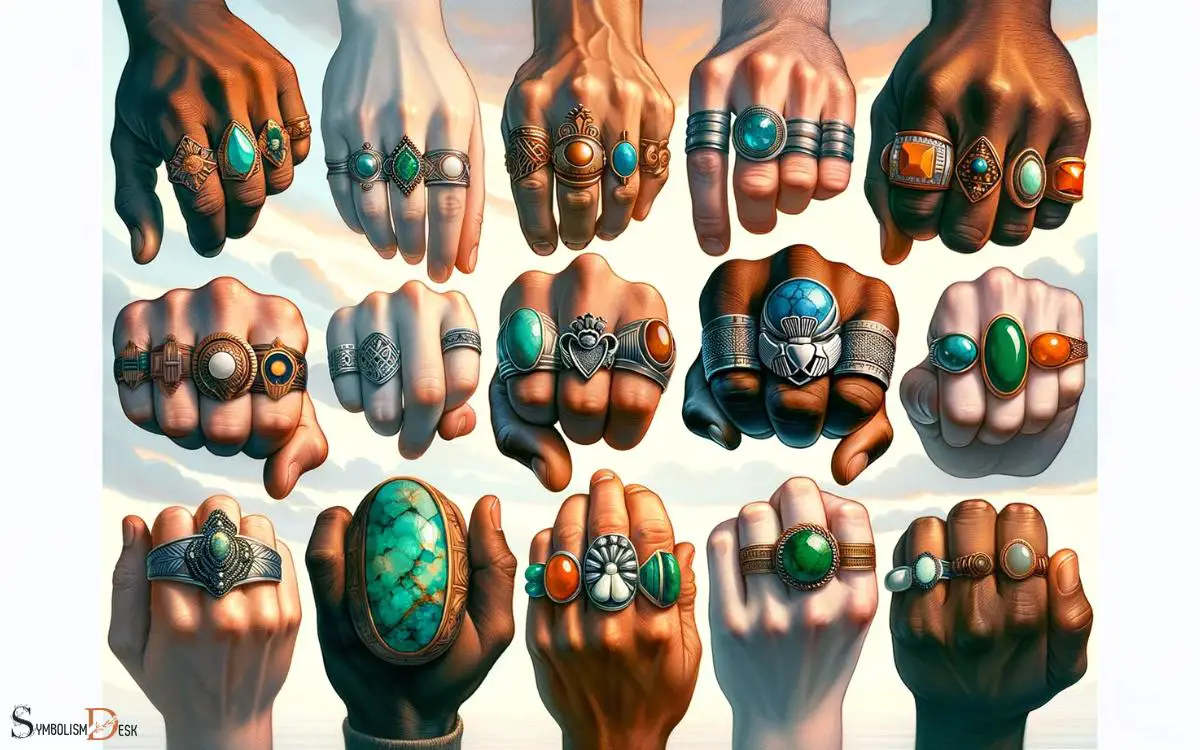
Ring designs across different cultures showcase a rich tapestry of symbolism and tradition. From the intricate Celtic knots to the opulent Indian bridal rings, each design carries with it a deep historical significance.
Exploring the symbolism behind the diverse ring-wearing customs can offer valuable insights into the cultural values and beliefs associated with these timeless pieces of jewelry.
Ring Designs Across Cultures
Across cultures, various ring designs carry significant cultural symbolism. These designs reflect the values, beliefs, and traditions of different societies, serving as powerful symbols of identity and heritage. Some notable examples include:
Materials Used In many cultures, the choice of materials for ring designs holds deep cultural significance.
For instance, the use of jade in Chinese rings symbolizes purity, longevity, and wisdom, while rings made from precious metals such as gold or silver are often associated with wealth and prosperity.
Symbolic Motifs The motifs adorning ring designs often convey specific cultural meanings. For example, Celtic knots in Irish ring designs represent eternity and interconnectedness, while the use of floral patterns in Indian ring designs symbolizes beauty, fertility, and the cycle of life.
Historical Significance of Rings
Throughout history, rings have served as powerful symbols of cultural identity and heritage, embodying the values and beliefs of diverse societies.
The historical significance of ring designs reflects the unique cultural symbolism embedded in different societies. Below is a table showcasing the historical significance of rings in various cultures:
| Culture | Ring Design | Symbolism |
|---|---|---|
| Ancient Egypt | Scarab beetle motif | Symbolized regeneration and rebirth |
| Celtic | Claddagh ring | Represents love, loyalty, and friendship |
| Japanese | Mokume-gane technique | Signifies the beauty of wood grain patterns |
These symbolic designs not only showcase the craftsmanship of the culture but also serve as a representation of their beliefs and traditions.
Understanding the historical significance of these designs provides insight into the cultural values attached to rings. This insight leads to a greater appreciation of the symbolism in ring-wearing.
Symbolism in Ring-Wearing
The historical significance of ring designs reflects the unique cultural symbolism embedded in different societies, exemplifying the values and beliefs of diverse cultures through their distinctive ring designs.
This symbolism is often evident in the materials used and the design motifs incorporated into the rings.
Materials Used in Ring Designs
- Gold: In many cultures, gold symbolizes wealth, prosperity, and good fortune.
- Gemstones: Different gemstones hold various cultural meanings. For example, rubies may symbolize passion, while sapphires may represent wisdom or royalty.
These cultural symbols and meanings are integral to understanding the significance of ring-wearing in various societies, enriching the practice with layers of history, tradition, and meaning.
Rings as Expressions of Love
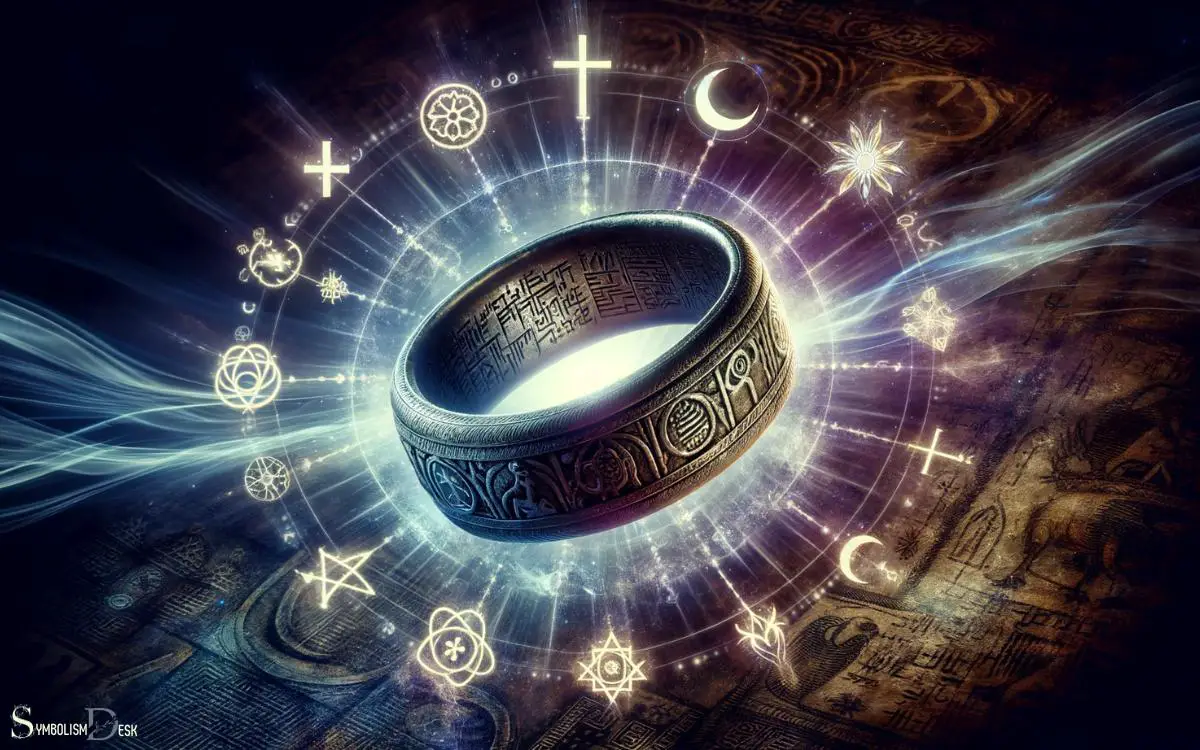
A ring symbolizes love when it’s given as an expression of commitment and devotion. Whether it’s an engagement ring, a wedding band, or a gift to signify a deep bond, the act of giving a ring represents a promise of love and fidelity.
The circular shape of the ring is often seen as a symbol of eternity, with no beginning or end, mirroring the everlasting nature of true love. The choice of metal and gemstones can also carry significant meaning, reflecting the uniqueness of the relationship and the depth of emotion. The intricate craftsmanship and design can further represent personal stories or shared moments, making the ring a deeply sentimental keepsake. In some interpretations, the fleeting sparkle of the gemstones serves as a reminder to cherish the present, tying into the evanescence symbol meaning explained as an appreciation for life’s transient beauty. Together, these elements create a timeless emblem of connection and commitment.
Beyond material value, the emotional significance of a ring as a token of love is profound, serving as a constant reminder of the enduring affection and connection between two individuals.
Ring Symbolism in Different Relationships
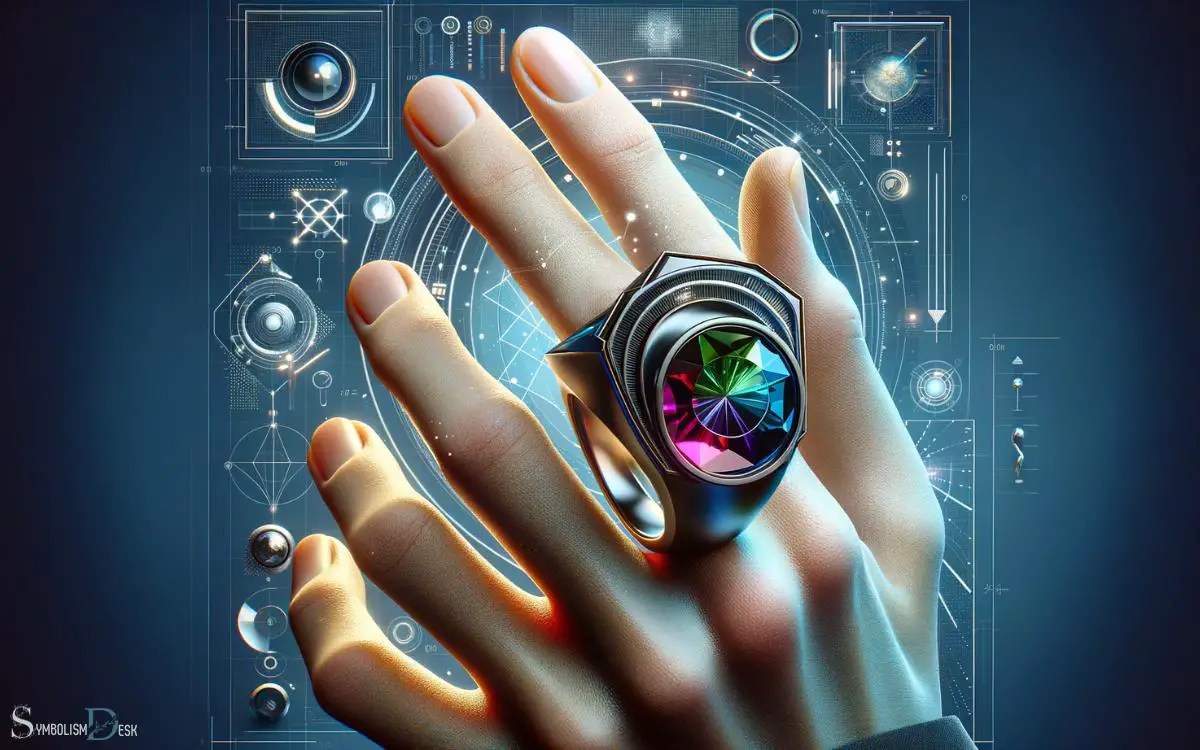
In various relationships, rings serve as tangible symbols of commitment and affection, reflecting the enduring nature of the bond between individuals.
The symbolism of a ring varies across different types of relationships:
Romantic Relationships:
- Engagement Rings: Symbolize the decision to commit to a lifelong partnership.
- Wedding Bands: Represent the union and eternal love between spouses.
Familial Relationships:
- Mother’s Rings: Typically feature the birthstones of her children, symbolizing maternal love and connection.
- Signet Rings: Passed down through generations, signifying familial heritage and unity.
In each instance, the ring holds profound significance, encapsulating the unique and lasting connections found within diverse relationships.
Spiritual and Religious Meaning of Rings
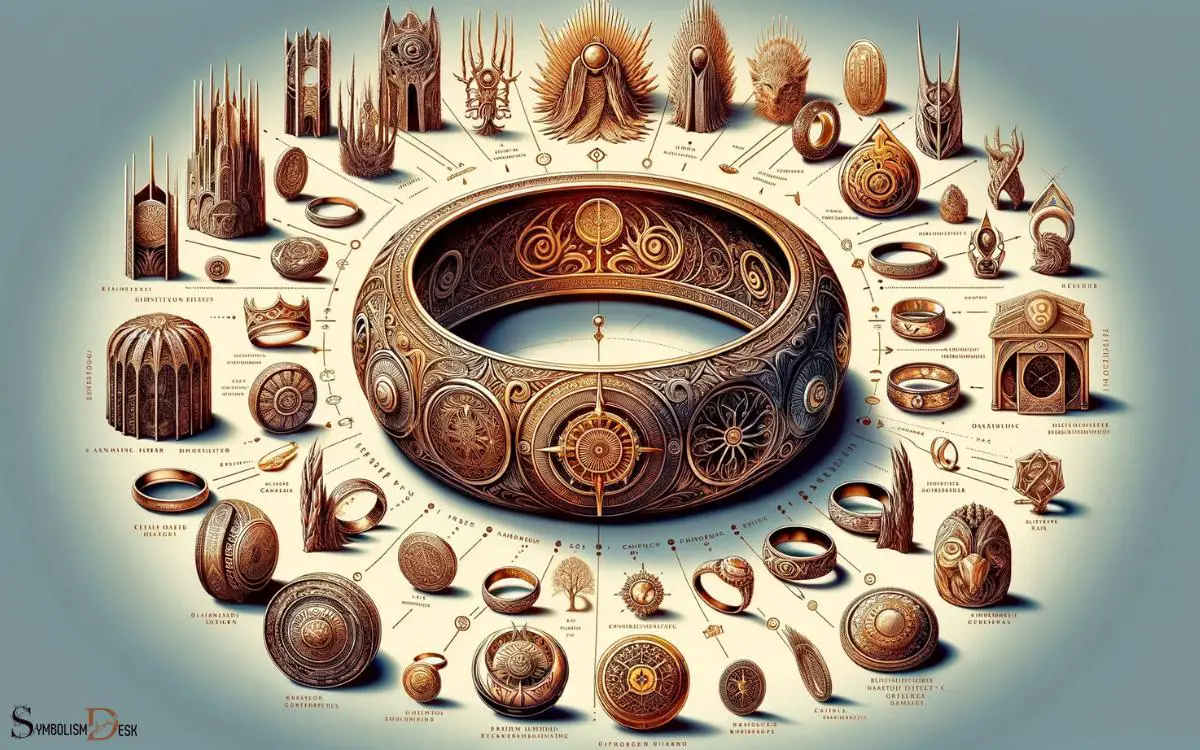
Symbolizing devotion and faith, rings in spiritual and religious contexts often signify a deep connection to divine principles and beliefs.
In Christianity, a ring is seen as a symbol of commitment to God and a reminder of the eternal nature of the relationship between believers and the divine.
In Hinduism, the ring, known as ‘bichiya,’ is worn on the second toe of the left foot to signify marriage and enhance the connection between husband and wife.
In Islam, the ring is a significant symbol of the marital bond and is often exchanged during the marriage ceremony.
Across various spiritual and religious traditions, the circular shape of the ring represents the unending and eternal nature of the divine and the commitment to upholding the associated beliefs and values.
This deep spiritual and religious significance has contributed to the evolution of ring symbolism.
– Is the Symbolic Meaning of a Square Ring Different from a Regular Ring?
The symbolic meaning of square in a ring holds a unique significance. A square ring symbolizes stability, balance, and strength. Unlike a regular ring, the geometric shape of a square ring represents grounding and firmness, making it a powerful symbol for relationships and commitments.
Evolution of Ring Symbolism
The historical evolution of ring symbolism can be traced back to various cultural and societal influences that have shaped its significance over time.
Rings have evolved in meaning through diverse historical contexts and cultural practices, contributing to their symbolism in modern society.
Key factors in the evolution of ring symbolism include:
- Cultural Traditions Different cultures have assigned unique meanings to rings, influencing their symbolic significance.
- Social Norms The changing roles and expectations within societies have also impacted the symbolism of rings, reflecting shifts in values and beliefs about relationships and commitments.
Understanding the evolution of ring symbolism requires an exploration of these cultural and societal influences, shedding light on the rich tapestry of meanings that rings hold in the collective human experience.
Conclusion
The symbolic meaning of a ring has evolved over time, from its historical significance to its cultural and spiritual symbolism. In ancient times, the ring was a symbol of eternity and everlasting love, as it had no beginning or end. In modern culture, the wedding ring is a representation of the commitment and devotion that two individuals have for each other. The exchange of rings during a wedding ceremony is a powerful gesture that signifies the unity and partnership between two people. These symbolic wedding ring meanings continue to hold significant value in various cultures around the world.
Interestingly, 80% of people surveyed believe that a ring symbolizes eternal love and commitment, making it a powerful and universal symbol in relationships.
Whether as a piece of jewelry or a spiritual token, the ring holds a deep and meaningful significance in various aspects of human life.


